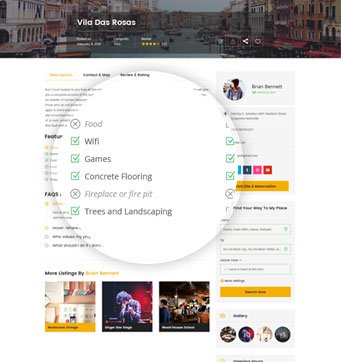Exploring the Majestic Rohtang Pass: A Comprehensive Guide
Introduction to Rohtang Pass
Rohtang Pass, situated in the Indian state of Himachal Pradesh, is a high mountain pass that forms part of the eastern Pir Panjal Range of the Himalayas. With an elevation of approximately 3,978 meters (or about 13,050 feet), Rohtang Pass stands as a significant geographical landmark in northern India. The pass offers stunning panoramic views of the surrounding snow-capped peaks and deep ravines, making it a popular destination for tourists, adventure enthusiasts, and nature lovers alike.
The name “Rohtang” translates to “pile of corpses,” a grim reminder of the numerous lives lost throughout history due to the treacherous weather conditions and challenging terrain that travelers faced while attempting to cross the pass. Despite these historical associations, modern advancements in infrastructure and safety measures have made Rohtang Pass more accessible and safer for visitors today.
Rohtang Pass serves as a critical link between the Kullu Valley and the Lahaul and Spiti Valleys, facilitating not only travel and tourism but also trade and cultural exchange between these regions. The pass is typically open from May to November, as heavy snowfall during the winter months renders it impassable. As a result, the period when the pass is accessible sees a significant influx of tourists and locals alike, eager to explore its natural beauty and experience its challenging trails.
Beyond its geographical and historical significance, Rohtang Pass also holds a unique place in local folklore and culture, often being featured in stories and legends passed down through generations. Its rugged beauty and the sheer scale of its natural environment continue to inspire awe and reverence, making Rohtang Pass not just a destination, but a profound experience for those who visit.
Historical Significance
The historical significance of Rohtang Pass is both rich and multifaceted, reflecting its role as a crucial juncture in ancient and modern times. Historically, Rohtang Pass has been a vital trade route, connecting the lush Kullu Valley with the arid landscapes of the Lahaul and Spiti Valleys. This connection facilitated not only the exchange of goods but also cultural and social interactions between these distinct regions. The pass enabled traders to transport wool, spices, and other commodities, thus fostering economic growth and cultural exchange.
In ancient times, Rohtang Pass was regarded as one of the more formidable routes due to its unpredictable weather and challenging terrain. Travelers and traders had to brave harsh conditions, including heavy snowfall and landslides, which often rendered the pass impassable. Despite these challenges, the determination to traverse Rohtang Pass underscores its importance in facilitating trade and communication across the Himalayan region.
In modern times, Rohtang Pass continues to hold strategic importance, particularly for the Indian Army. The pass serves as a critical access point to the border regions of Ladakh, enabling the Indian military to maintain efficient logistical support and troop movement. The strategic significance of Rohtang Pass has necessitated the development of infrastructure projects, such as the construction of the Atal Tunnel, which provides an all-weather alternative route, enhancing connectivity and security.
Moreover, the pass has also become a symbol of human resilience and ingenuity. The efforts to maintain and improve the accessibility of Rohtang Pass, despite its natural challenges, reflect the enduring significance of this historic route. As a result, Rohtang Pass remains a testament to the enduring spirit of exploration and the strategic foresight of ancient and modern societies alike.
Climate and Best Time to Visit
Rohtang Pass, located in the Indian state of Himachal Pradesh, is known for its extreme and unpredictable weather conditions. The climate here can be harsh, especially in the winter months when heavy snowfall renders the pass impassable. From late November to early May, the region is blanketed in snow, making it inaccessible for tourists and vehicles alike. Temperatures during this period can plummet to as low as -20°C, creating a challenging environment for any form of travel.
In contrast, the summer months from late May to early October offer a more hospitable climate, making it the ideal time to visit Rohtang Pass. During these months, the snow begins to melt, clearing the pathways and making the pass navigable. Average temperatures range from 15°C to 20°C, providing a comfortable climate for exploration and outdoor activities. However, even in these warmer months, visitors should be prepared for sudden weather changes, as the high-altitude location can still experience unexpected temperature drops and occasional rainfall.
Precipitation is another significant aspect of Rohtang Pass’s climate. The region receives substantial rainfall during the monsoon season, typically from late June to early August. This can lead to slippery roads and reduced visibility, posing additional challenges for travelers. Therefore, while the overall best time to visit remains from late May to early October, it is advisable to avoid the peak monsoon period to ensure a safer and more enjoyable experience.
In summary, the optimal window for visiting Rohtang Pass is from late May to early October, when the weather is relatively stable and the pass is accessible. Planning a trip during this period allows visitors to fully appreciate the breathtaking landscapes and unique experiences that Rohtang Pass has to offer.
Rohtang Pass, a popular destination in the Himalayas, is accessible through various transportation options, each offering its own set of advantages. The nearest town to Rohtang Pass is Manali, from where travelers have multiple choices for their journey.
By Road from Manali
The most common way to reach Rohtang Pass is by road. Travelers can either rent a car, hire a taxi, or take a bus. Renting a car provides the flexibility to travel at your own pace and explore the picturesque landscapes en route. Car rentals are available in Manali, with both self-drive and chauffeur-driven options. Alternatively, hiring a taxi is a convenient choice for those who prefer a more relaxed journey without the responsibility of driving. Taxis can be easily booked through local agencies or online platforms.
Taking the Bus
For budget-conscious travelers, buses are an economical option. The Himachal Pradesh Road Transport Corporation (HRTC) operates regular bus services from Manali to Rohtang Pass. These buses are well-maintained and offer a comfortable ride, although they may take slightly longer compared to private vehicles. It is advisable to book bus tickets in advance, especially during peak tourist season, to ensure availability.
Necessary Permits
Visitors should be aware that a permit is required to travel to Rohtang Pass. The permits are issued by the local administration to regulate traffic and preserve the environment. These permits can be obtained online through the official Himachal Pradesh tourism website or in person at designated offices in Manali. It is important to carry a valid ID and vehicle registration documents while applying for the permit.
Challenges on the Journey
The journey to Rohtang Pass can be challenging due to the high altitude and unpredictable weather conditions. The road is often narrow and winding, requiring careful navigation. During the winter months, heavy snowfall can lead to road closures, making the pass inaccessible. Travelers are advised to check weather updates and road conditions before embarking on their journey. Additionally, carrying essentials such as warm clothing, snacks, and water is recommended to ensure a comfortable trip.
Popular Activities and Attractions
Rohtang Pass, a revered destination for adventure enthusiasts and nature lovers alike, offers an array of exhilarating activities. One of the prime attractions during the snow season is skiing. The powdery snow and the expansive slopes provide an ideal terrain for both amateur and experienced skiers. Alongside skiing, snowboarding has also gained immense popularity. The thrill of gliding down the snow-covered gradients attracts enthusiasts from all over the globe.
For those seeking a less strenuous activity, sledding is a delightful option. It is particularly popular among families and children, providing a fun and safe way to enjoy the snowy landscape. Another exciting activity is snow scooter rides. These high-powered scooters allow visitors to explore the winter wonderland with ease and speed, offering a unique perspective of the breathtaking surroundings.
Beyond the adventure sports, Rohtang Pass is home to several natural attractions that captivate the senses. Rahala Waterfalls, located en route to the pass, is a mesmerising sight. The cascading waters, originating from melting glaciers, create a picturesque setting amidst the verdant landscape. The area around the waterfall is perfect for photography and picnics, making it a must-visit spot.
The panoramic views from Rohtang Pass are unparalleled. The majestic glaciers, towering peaks, and verdant valleys form a stunning backdrop that leaves a lasting impression on visitors. The Beas Kund, a glacial lake, is another point of interest. This serene body of water, nestled amidst the mountains, is considered sacred and adds to the region’s allure.
In essence, Rohtang Pass is a treasure trove of activities and natural wonders. Whether you are an adrenaline junkie or someone who appreciates the tranquility of nature, this destination offers something for everyone to relish.
Safety Tips and Precautions
When planning a trip to Rohtang Pass, it is imperative to prioritize safety due to the region’s harsh and unpredictable weather conditions. One of the foremost considerations is acclimatizing to high altitudes. Rohtang Pass sits at an elevation of around 3,978 meters (13,050 feet), and the sudden change in altitude can cause altitude sickness. To minimize this risk, spend a few days at a lower altitude, such as Manali, before making the ascent. Hydration is also key; drink plenty of water to help your body adjust to the high altitude.
Carrying adequate warm clothing is another essential precaution. Temperatures at Rohtang Pass can drop significantly, even during the summer months. Layering your clothing will help you adapt to varying temperatures throughout the day. Make sure to pack thermal wear, a good quality winter jacket, gloves, and a hat to protect yourself from the cold.
Given the unpredictable weather, it is also crucial to be prepared for sudden changes. Snowfall can occur unexpectedly, making roads slippery and visibility poor. Always check the weather forecast before starting your journey and keep an eye on real-time updates. Additionally, verify road conditions, as landslides and roadblocks are common occurrences that can hinder your travel plans.
Equally important is having a well-equipped vehicle. Ensure that your car or bike is in good condition and suitable for mountainous terrain. Carry essential supplies such as extra fuel, a first-aid kit, and a repair toolkit. Having a professional driver or an experienced guide can make a significant difference, especially for those unfamiliar with driving in mountainous regions.
Lastly, inform someone about your travel plans. Share your itinerary with family or friends, and make sure they know your expected return time. This simple step can be crucial in case of emergencies.
By adhering to these safety tips and precautions, visitors can ensure a safer and more enjoyable experience at Rohtang Pass, allowing them to fully appreciate its majestic beauty.
Local Culture and Cuisine
Rohtang Pass, while renowned for its breathtaking natural landscapes, also serves as a window into the rich cultural tapestry of the region. The nearby villages are inhabited by communities that have preserved their traditional way of life for generations. These villages offer a unique opportunity to experience the local culture firsthand, from their architectural styles to their daily practices.
The people living in these villages primarily follow a rural lifestyle, heavily influenced by the challenging mountainous terrain. Agriculture and animal husbandry are the mainstays of their economy, and these activities are deeply embedded in their cultural practices. Festivals such as ‘Lohri’, ‘Baisakhi’, and ‘Dussehra’ are celebrated with great enthusiasm, featuring traditional music, dances, and rituals that reflect the community’s close-knit and vibrant culture.
One of the most intriguing aspects of visiting Rohtang Pass is the opportunity to indulge in the local cuisine. The region boasts a variety of culinary delights that are both unique and flavorsome. A must-try is ‘Dham,’ a traditional feast that is usually prepared during festivals and special occasions. This elaborate meal includes rice, dal, and an assortment of delicacies like ‘madra’, ‘kadhi’, and ‘rajma’. The food is typically cooked in brass utensils and served on leaf plates, adding an authentic touch to the dining experience.
Another local specialty is ‘Siddu,’ a type of steamed bread made from wheat flour and stuffed with a mixture of poppy seeds, sesame seeds, and nuts. It is usually served with ghee or clarified butter and makes for a hearty, satisfying meal. The simplicity and richness of these dishes reflect the region’s culinary heritage and offer a delectable insight into the local way of life.
Exploring the local culture and cuisine of Rohtang Pass not only enhances the overall travel experience but also provides a deeper understanding of the region’s traditions and lifestyle. Whether it’s participating in a local festival or savoring a traditional meal, each moment spent in this majestic locale contributes to a memorable journey.
Environmental Concerns and Conservation Efforts
The growing popularity of Rohtang Pass as a tourist destination has brought with it a series of environmental concerns. One of the primary issues is pollution, which manifests in various forms, including air and water pollution, as well as littering. The influx of vehicles, especially those running on non-renewable energy sources, contributes significantly to air pollution. This, in turn, affects the quality of the atmosphere and poses a threat to both human health and the local ecosystem.
Another pressing concern is the impact on local flora and fauna. Rohtang Pass is home to a diverse range of plant and animal species, many of which are endemic to the region. Unregulated tourism can lead to habitat destruction, which jeopardizes the survival of these species. Additionally, the introduction of non-native species through human activities can disrupt the existing ecological balance, leading to unforeseen consequences.
To address these environmental challenges, several measures have been implemented. The government has introduced stringent regulations aimed at controlling vehicular emissions and managing waste. For instance, permits are now required for vehicles entering Rohtang Pass, and a cap on the number of daily visitors has been set to minimize human impact. These regulations are enforced rigorously to ensure compliance.
Eco-friendly initiatives have also been launched to promote sustainable tourism. These include the installation of waste disposal units, the promotion of eco-tourism practices, and awareness campaigns highlighting the importance of preserving the environment. Local communities and organizations play a crucial role in these initiatives, often leading grassroots efforts to maintain the area’s natural beauty.
Responsible tourism is essential for the conservation of Rohtang Pass. Tourists are encouraged to adhere to guidelines that minimize their environmental footprint, such as avoiding littering, using eco-friendly transportation options, and respecting local wildlife. By fostering a culture of responsibility and awareness, we can ensure that Rohtang Pass remains a pristine sanctuary for future generations to enjoy.






